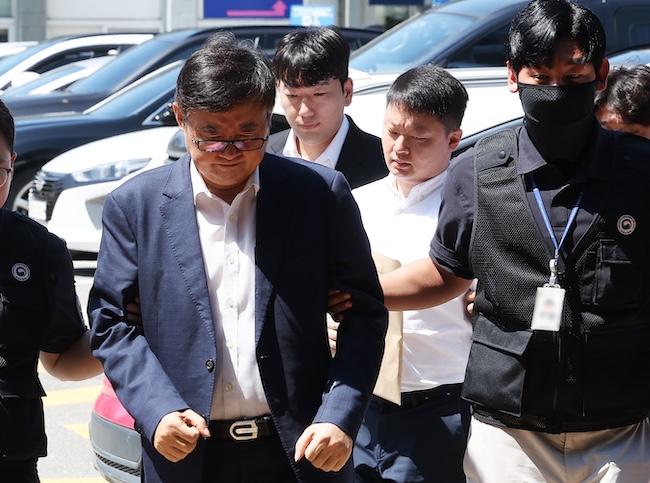
Aricell CEO Park Soon-kwan is escorted to a detention center after attending an arrest warrant hearing on Aug. 28, 2024. (Image courtesy of Yonhap)
SUWON, South Korea, Aug. 29 (Korea Biziwre) — A court issued a warrant to arrest the chief executive of lithium battery maker Aricell in connection with June’s deadly fire that claimed 23 lives, marking the first such case since the law penalizing employers for serious industrial accidents came into force two years ago.
The Suwon District Court issued the arrest warrant for Park Soon-kwan, the CEO of Aricell, late Wednesday, citing the gravity of the charges.
It marks the first time the head of a company was formally arrested since the enforcement of the Serious Accidents Punishment Act in 2022, which punishes owners or CEOs of companies to at least one year in prison or fines of up to 1 billion won (US$747,372) for industrial accidents.
The court also issued an arrest warrant for Park’s son, who was the general manager of the company, on similar grounds but rejected the warrant to arrest two other officials, saying they posed no risk of fleeing or destroying evidence.
Investigators found that the deadly blaze that occurred at Aricell’s plant in Hwaseong, some 45 kilometers south of Seoul, on June 24 may have been caused by the mobilization of unskilled workers in the manufacturing process. The blaze killed 23 workers, including 18 foreigners, and injured eight others.
They also found that Aricell had passed quality inspections by continuously manipulating test samples since it started supplying battery products to the military in 2021. The company’s products eventually failed to meet the national defense standards in a quality test in April this year, authorities said.
In addition, the evacuation route had been poorly constructed, with the emergency exit installed in the opposite direction of the fire escape route, and safety training for workers had not been implemented, according to authorities.
(Yonhap)






